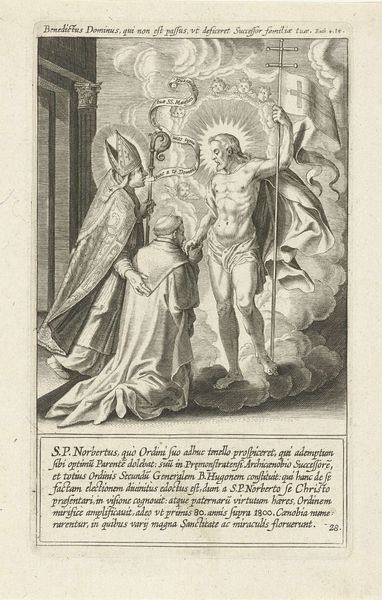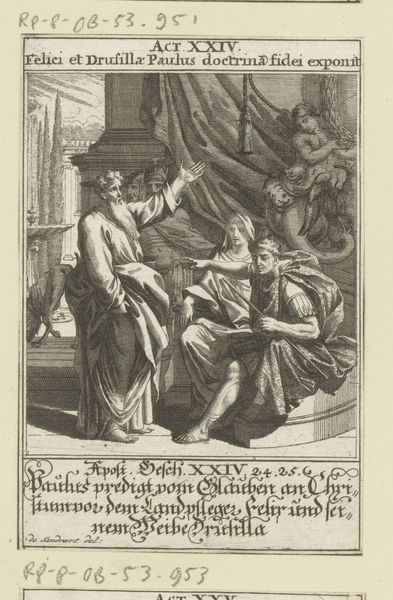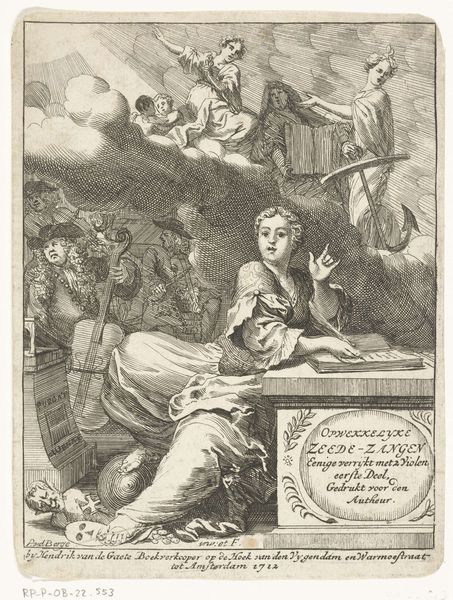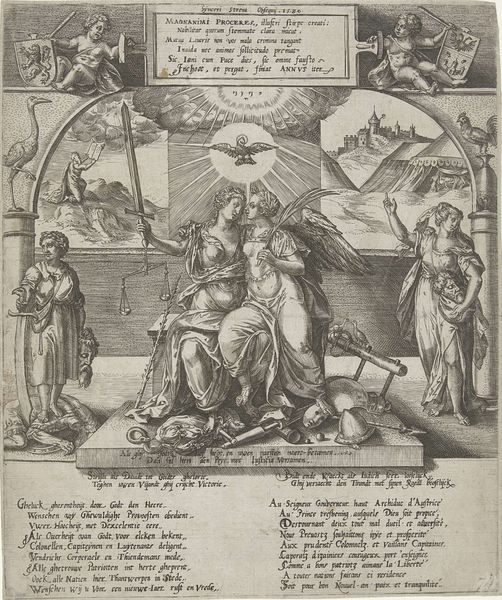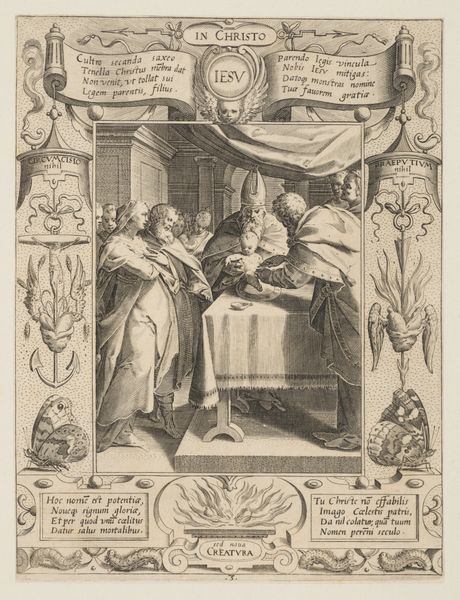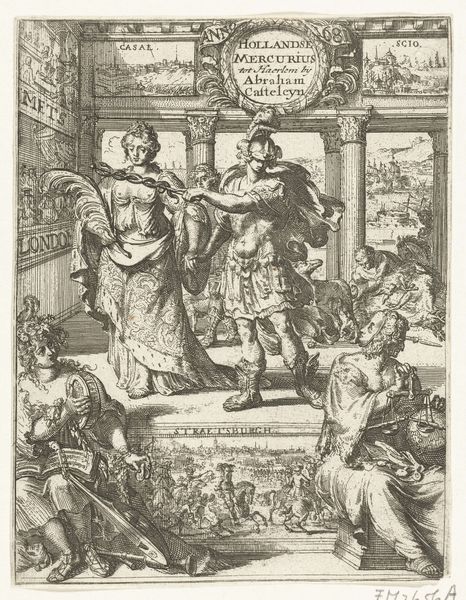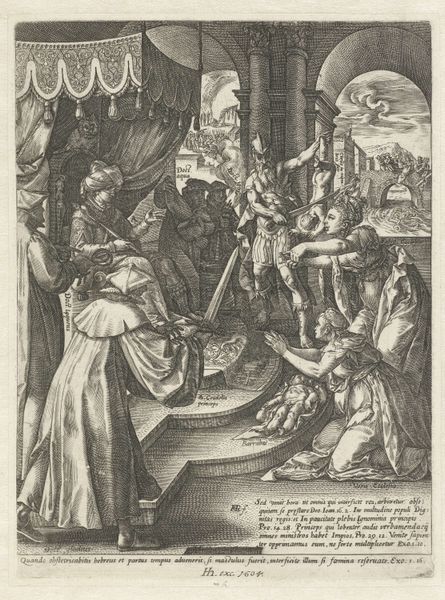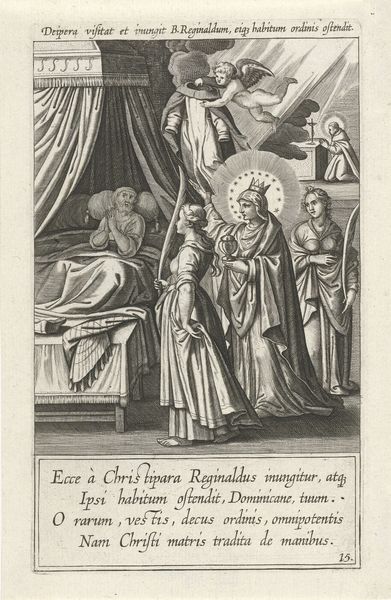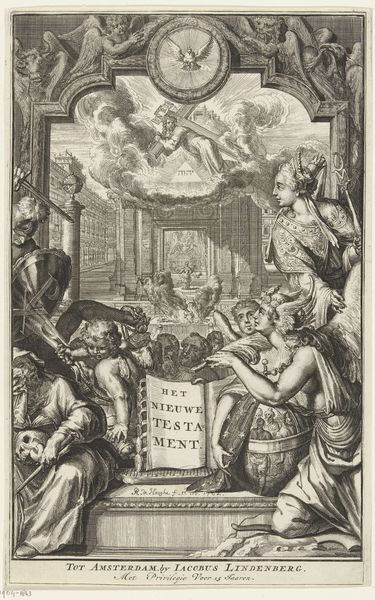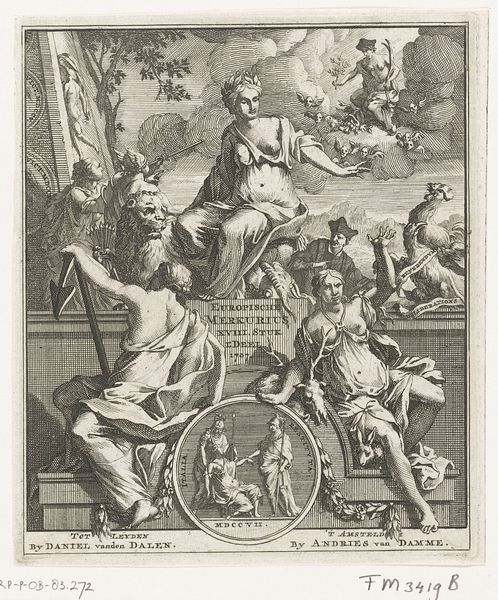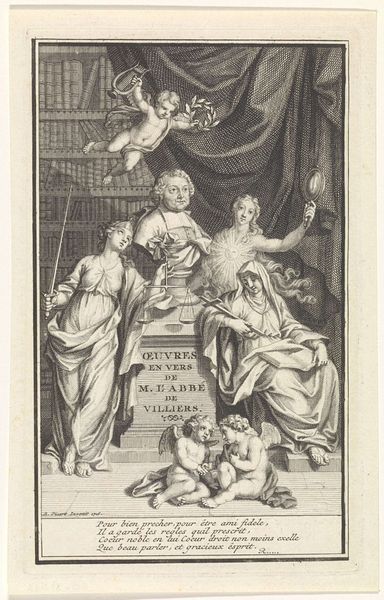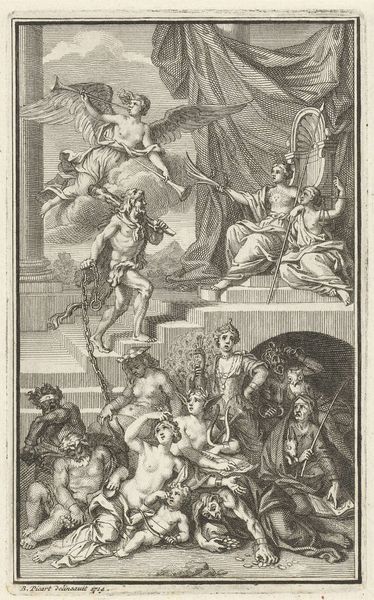
print, engraving
#
allegory
#
baroque
# print
#
figuration
#
history-painting
#
engraving
Dimensions: height 157 mm, width 148 mm
Copyright: Rijks Museum: Open Domain
Curator: The balance in this engraving titled "Vrouwfiguur met palet wijzend op een schilderij", created between 1688 and 1700 by Arnold Houbraken, is rather remarkable, isn't it? It’s a baroque piece, currently held in the Rijksmuseum. Editor: Indeed. The visual rhythm here, particularly the cascading arrangement of figures, generates a rather chaotic but expressive aesthetic, wouldn’t you agree? Curator: I am struck by the allegory—the woman with the palette directing our attention. Consider the role prints like this played at the time. Houbraken, known for his biographies of Dutch Golden Age painters, crafted this as a guide or instruction for artists. The materials—engraving—would have been relatively accessible, intended for widespread use in studios. Editor: The light and shadow used by Houbraken really articulate form and space. See how the dramatic chiaroscuro brings depth and theatricality, guiding the eye? What strikes me most are the formal devices—the dynamism in her pose against the stillness of the painting itself. It gives her such immediacy. Curator: Look closer. Notice the monkey? It is a direct reflection on the painterly traditions and methods and their reception within the artisan social framework. The painting isn’t meant as a "fine art" product, but an accessible guide. That element reminds us that these aesthetic choices come loaded with social information! Editor: Fascinating, yes. To me, however, it is clear this is a masterful deployment of line and composition, generating drama, despite the banality of the medium. Curator: We get glimpses into art production, artist studios, and the dissemination of painting methods. This is art functioning as a key aspect of art making. I find that powerful and insightful. Editor: I see now why we call them Old Masters! These pieces contain deep layers of formal artistry coupled with a cultural understanding of craft and society. Thanks for opening my eyes.
Comments
No comments
Be the first to comment and join the conversation on the ultimate creative platform.
